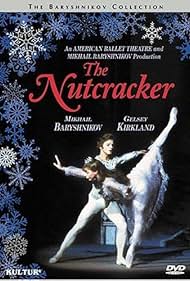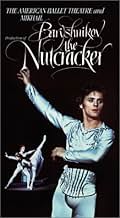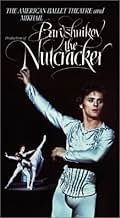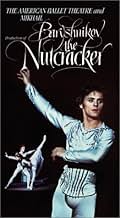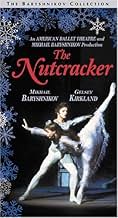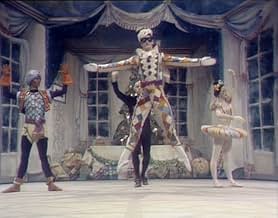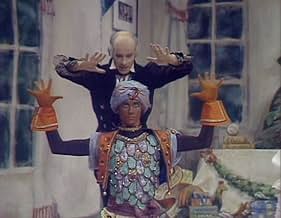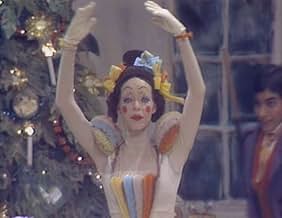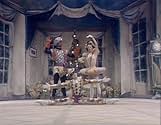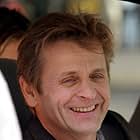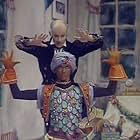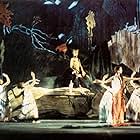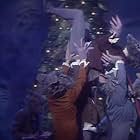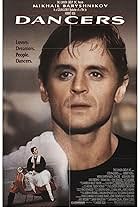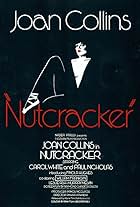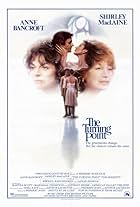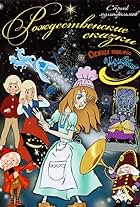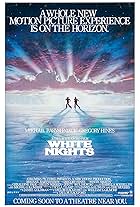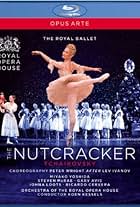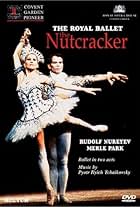The television adaptation of the Baryshnikov production.The television adaptation of the Baryshnikov production.The television adaptation of the Baryshnikov production.
- Nominated for 2 Primetime Emmys
- 2 nominations total
- Director
- Writer
- All cast & crew
- Production, box office & more at IMDbPro
Storyline
Did you know
- TriviaThis was originally a stage production, but rather than taping or filming it in a theatre with a live audience, Baryshnikov chose to have the sets enlarged and taped it in a television studio with no audience.
- Crazy creditsMarcos Paredes, who dances both the roles of The Mouse King and the drunken guest at the Christmas party, does not receive any screen credit for playing the drunken guest.
- Alternate versionsThe original CBS broadcast presentation of this production featured more narration than the later television broadcasts of it. In the original 1977 version, as the mice appear in their tuxedos, the narrator explains that, in Clara's imagination, they represent the adults at the Christmas party, and in Act II, just before the series of dances at the Kingdom of Sweets, the narrator mentions that Clara "must touch each couple to bring them to life". In the PBS version, all mention of the mice representing the adults was removed, but the narrator still commented that Clara had to bring the couples to life. On the current DVD, and on all PBS telecasts now, all narration stops after the opening scene. The narration was removed without having to cut any of the music or the dancing; both have always remained intact in all of the versions of this "Nutcracker".
- ConnectionsEdited into Breakfast with the Arts: The Nutcracker (1997)
- SoundtracksThe Nutcracker
(ballet)
Music by Pyotr Ilyich Tchaikovsky
Played by the National Philharmonic Orchestra, conducted by Kenneth Schermerhorn, with the boys of the Desborough School Chorus, conducted by Roger Durston
Featured review
While other film and video productions of the Tchiakovsky classic emphasize pageantry, amazing sets, and holiday warmth, the American Ballet Theater's `Nutcracker' concentrates on strong dancing and intricate choreography. There is consequently much to adore in this production. Gelsey Kirkland, at the prime of her career, and before her drug addiction and battle with anorexia tragically destroyed her dancing talent, plays Clara as a young girl who matures over the course of the ballet. As such, Baryshnikov's version is less a story of a young girl's Christmas dream, and more a coming-of-age tale.
The party scene of `The Nutcracker' is usually a showcase for the children's classes of a ballet company. The Balanchine version, for example, does not really employ any serious dancing until the Waltz of the Snowflakes; most of the first act features children mulling about with their presents. Baryshnikov chose instead to concentrate on adult dancers, turning the Drosselmayer gift sequences in particular into amazingly intricate, well-danced pieces. The Moorish dance stands out as one of the finest, most exciting dances ever to be caught on film.
Unfortunately, this production does have a few weaknesses. The dancers reportedly complained that the television set where it was filmed was too cramped, and that the soundtrack was too slow. Indeed, the sound throughout is awful; there are many more vibrant recordings of the music that could have been used. These dancers are professionals used to working with a live orchestra, and they seem confined by the canned music. The sets are unspectacular and washed-out, making this version perhaps the least exciting for young children; both the NYC Ballet and the Sendak version are more visually stimulating.
Still, for fans of serious dance, this version must be seen. It is still a thrill to watch Baryshnikov and Kirkland perform.
The party scene of `The Nutcracker' is usually a showcase for the children's classes of a ballet company. The Balanchine version, for example, does not really employ any serious dancing until the Waltz of the Snowflakes; most of the first act features children mulling about with their presents. Baryshnikov chose instead to concentrate on adult dancers, turning the Drosselmayer gift sequences in particular into amazingly intricate, well-danced pieces. The Moorish dance stands out as one of the finest, most exciting dances ever to be caught on film.
Unfortunately, this production does have a few weaknesses. The dancers reportedly complained that the television set where it was filmed was too cramped, and that the soundtrack was too slow. Indeed, the sound throughout is awful; there are many more vibrant recordings of the music that could have been used. These dancers are professionals used to working with a live orchestra, and they seem confined by the canned music. The sets are unspectacular and washed-out, making this version perhaps the least exciting for young children; both the NYC Ballet and the Sendak version are more visually stimulating.
Still, for fans of serious dance, this version must be seen. It is still a thrill to watch Baryshnikov and Kirkland perform.
Details
Contribute to this page
Suggest an edit or add missing content
